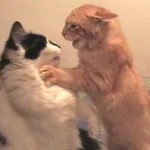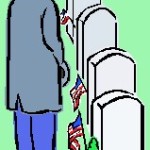I’m going to be away for a few days, while I coach nonfiction writers at Oregon Christian Writers Summer Conference. The new/old venue at Aldersgate near Turner, Oregon, and lots of eager, hardworking writers has me stoked for a fun-filled time from Aug 15-18. I’ll try to post while I’m there, but you never know what kind of Internet you’re going to find, plus I’ll be teaching, mentoring and critiquing, so I may be falling into bed at night. One more tip, though, before I go.
Writing Tip for Today: Going back to the question of characters, as in a cast of thousands, most writers agree it’s risky to overload your reader, especially in the opening pages. The same holds true for nonfictional endeavors such as memoir or creative nonfiction. How to solve the problem of too many characters?
- Consider Combining Characters. If you have two or more characters who in general have the same job and the same importance, you might consider combining some of them into one representative character. Let’s say you have a story about a family, with the narrator a school boy or girl. Even for memoir (I know, this feels strange), consider representing siblings, aunts, uncles and grandparents with just one character for each. Even if your paternal grandma feels slighted at being represented by your mom’s mom, the reader is going to thank you. For scenes at school, the narrator’s classmates, say three for instance, can represent the entire class.
- Fewer Characters Equal Deeper Characters. Another reason to winnow down your cast to only what is required for the story means you’ll be able to write the remaining characters in more depth.
- No Speaking Part? In general, if the character has no dialogue, consider letting him/her be “the policeman” or “the clerk.”
- Foreshadow and Plant. If you have characters who don’t figure into the story until the second half, try, where possible, to foreshadow or plant at least their names in the beginning. That way, when the reader arrives at the character’s part, they’ll feel as if they already know the person. Otherwise, it often feels like an intrusion to have characters suddenly burst onto the scene.
- Tag Characters. Try to write each character so that he/she sounds unique (and not too much like you!) You can give some characters “tags,” meaning habit, dialogue or an appearance that’s unusual. Be careful with stereotypical tags such as raking fingers through hair or chewing on a toothpick. Tags should help the reader identify characters, but shouldn’t upstage the narrator.
I’m off to the OCW summer conference 2011. Maybe I’ll see some of you there. Meanwhile, keep writing!




